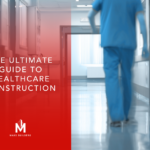In the intricate dance of commercial real estate, the division of financial responsibilities in commercial build-outs stands as a pivotal point of negotiation and planning. Whether you are a business owner seeking to tailor a rental space to your specific needs, or a property owner aiming to attract and retain high-quality tenants, understanding the nuanced financial landscape of commercial build-outs is essential. This comprehensive guide delves into the depths of commercial build-out expenses, offering clear insights and actionable advice.
Understanding Commercial Build-Outs
A commercial build-out involves the customization of rental space to meet the specific needs of a tenant. This process can range from minor modifications like painting and carpeting, to extensive renovations that might include altering the layout, upgrading the electrical system, or installing specialized equipment. The scope of a build-out is largely dictated by the tenant’s business type, operational needs, and personal preferences, as well as the condition and layout of the leased space.
Key Players and Their Roles
The main participants in the commercial build-out process are the landlord and the tenant. Each party has distinct interests and responsibilities:
- Landlords aim to lease their spaces with as few changes as necessary to minimize costs and maintain flexibility for future tenants.
- Tenants seek to adapt the leased space to reflect their brand identity, operational requirements, and employee needs, which might involve significant alterations.
Financial Responsibilities in Commercial Build-Outs
The question of “Who pays for what?” in a commercial build-out is answered through negotiation between the landlord and tenant. The agreement reached can significantly impact the lease’s value for both parties.
Landlord Contributions: The Tenant Improvement Allowance
Many landlords offer a Tenant Improvement Allowance (TIA), which is a specified sum towards the cost of the build-out. The TIA can cover a broad spectrum of renovations, depending on the agreement. It’s crucial for tenants to understand that the TIA has limitations and may not cover all desired improvements.
Tenant Responsibilities: Beyond the Allowance
Tenants often find that their vision for the space exceeds the TIA. In such cases, tenants are responsible for covering the additional costs. Negotiating a higher TIA is possible but may result in higher rent or longer lease terms.
Negotiating Build-Out Costs
Effective negotiation requires a detailed understanding of the desired build-out, a comprehensive cost estimate, and knowledge of the commercial real estate market. Both parties should strive for a deal that balances the tenant’s needs with the landlord’s capacity to contribute financially.
Cost-Saving Strategies for Tenants
- Prioritize Essential Improvements: Focus on changes that are critical for your business’s operation.
- Leverage Existing Features: Incorporating the space’s current elements can reduce costs.
- Negotiate with Contractors: Obtaining multiple bids and negotiating can lead to savings on construction costs.
Lease Clauses Impacting Build-Out Costs
Several lease clauses can influence the financial dynamics of a commercial build-out:
- Improvement and Alterations Clause: Defines the scope of changes the tenant is allowed to make and whether the landlord’s approval is needed.
- Surrender Clause: Specifies the condition in which the tenant must return the space at the end of the lease, which can impact the cost of reversing modifications.
- Rent Abatement: Allows tenants to forgo rent payments while the build-out is underway, offsetting some of the costs.
Innovative Financing Options for Commercial Build-Outs
Exploring alternative financing options can provide tenants with the flexibility to achieve their ideal build-out without bearing the entire financial burden upfront. These options include:
- Commercial Loans: Tenants can secure loans specifically for build-outs, offering them the capital needed while spreading the cost over time.
- Leasehold Improvements Financing: Some financial institutions offer financing directly related to leasehold improvements, which may offer more favorable terms based on the lease agreement.
- Vendor Financing: In some cases, contractors or equipment suppliers may offer financing options for their services or products, potentially at a lower interest rate than traditional loans.
These financing solutions can be particularly valuable for startups and small businesses that have clear growth potential but are still building their financial footing. By leveraging these options, tenants can negotiate from a position of strength, knowing they have the resources to fund the build-out.
FAQS
What if the landlord’s preferred contractors are more expensive than my choices?
If the landlord’s preferred contractors are more expensive, tenants can try to negotiate the use of their chosen contractors, provided they meet the landlord’s approval for quality and reliability. Presenting comparative bids that demonstrate cost savings while ensuring quality can persuade a landlord to agree to alternative contractors.
How do I handle unexpected costs that arise during the build-out process?
To manage unexpected costs during the build-out, include a contingency budget in your initial financial planning. Open and ongoing communication with your contractor to monitor the project’s progress and costs can also help identify potential overruns early. If unexpected expenses do occur, discuss them with your landlord to explore possible adjustments to the Tenant Improvement Allowance or other terms of your lease agreement.
How long do commercial build-outs usually take?
The timeline for a commercial build-out can vary widely depending on the complexity of the project, permit acquisition, material availability, and other factors. Minor renovations might take a few weeks, while extensive modifications could take several months. Setting a realistic timeline with your contractor and communicating this with your landlord is crucial.
What happens if the build-out exceeds the Tenant Improvement Allowance?
If the cost of the build-out exceeds the allotted TIA, the tenant is typically responsible for covering the difference. Planning your budget carefully and having a contingency fund for unexpected expenses can help manage any overages without significant financial strain.
Can I make further modifications to the space during my lease?
Further modifications during the lease term usually require the landlord’s approval, according to the terms specified in the lease agreement. It’s essential to review your lease’s improvement and alteration clauses to understand the permissions and restrictions on additional changes to the space.
What are some common mistakes tenants make during the build-out process?
Common mistakes include underestimating the budget, failing to account for all potential costs, overlooking the need for permits, neglecting to negotiate favorable lease terms, and not hiring experienced professionals for design and construction. Proper planning, budgeting, and professional guidance can help avoid these pitfalls.
Conclusion: A Win-Win Outcome
Achieving a fair and beneficial arrangement for commercial build-outs requires negotiation, understanding, and collaboration between landlords and tenants. By focusing on clear communication, realistic budgeting, strategic planning, and innovative financing, both parties can reach an agreement that meets the tenant’s needs while respecting the landlord’s financial constraints. The ultimate goal is to create a space that supports the tenant’s business success, contributing to a long-term, mutually beneficial landlord-tenant relationship.


